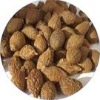- Other Canned Food[240]
- Used Tools[1]
- Oscilloscopes[1]
- Pressure Cookers[1]
- Contact Person : Mr. LV ALU
- Company Name : China (Bozhou) Shanghai Leiyunsheng Pharmaceutical Factory
- Tel : 0086-558-5188686
- Fax : 0086-558-5188686
- Address : Anhui,BOZHOU,shijiuli economic&technics develop park
- Country/Region : China
- Zip : 236800
herbal medicine:Calendula Flower
Detailed Product Description
Calendula or as mostly known by marigold is a much beautiful and amazing flower with many medicinal and cosmetic uses.
Its common name is marigold, golds, garden marigold. Its botanical or Latin name is calendula officinalis.
Calendula, or pot marigold, is native to the Mediterranean countries.
It was used since a very long time ago by ancient civilizations as topical ointments and washes for wounds and ulcers. The ancient Romans used calendula to treat scorpion bites and soldiers in the American Civil War found it helped stop wounds from bleeding.
Some American physicians of the nineteenth century considered calendula helpful in treating stomach ulcers, liver complaints, conjunctivitis, and superficial wounds, sores, and burns.
The parts used are the flower petals and the herb. Only the deep orange flowered variety is of medicinal use.
Throughout the ages, tinctures made from calendula blossoms have been used to treat headaches, toothaches and even tuberculosis. The ancient Romans used calendula to treat scorpion bites and soldiers in the American Civil War found it helped stop wounds from bleeding.
It is used as infusions, extracts, and ointments with the petals by folk medicine healers in Europe to induce menses, produce sweat during fevers, and to cure jaundice.
Used historically as "poor man's saffron," in different foods to give a beautiful color and a flavor.
Calendula flower consists of the dried flower heads or the dried ligulate flowers (ray florets) of C. officinalis.
Its main constituents include an essential oil, triterpene glycosides and aglycones, as well as carotenoids pigments, calendulin, and polysaccharides.











